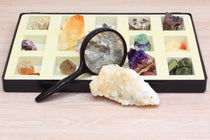Palladium, a lustrous white material, is a precious metal highly valued for its rarity and unique properties. You may be familiar with palladium as an investment commodity similar to gold and silver, but its uses extend far beyond being just a monetary asset. Its exceptional ability to absorb hydrogen, for example, is leveraged in various scientific and technological applications.
Your smartphone, computer, and even the car you drive may rely on palladium. It plays a crucial role in electronics and the automotive industry, particularly in the manufacture of catalytic converters, which reduce harmful emissions. The demand for palladium continues to rise due to its indispensable role in these sectors. Beyond this, you'll find this versatile metal in dental equipment and jewelry, shining bright due to its resistant and desirable aesthetic qualities.
In the chemical industry, palladium's role as a catalyst is significant. It accelerates reactions without undergoing permanent changes, thereby making processes more efficient and cost-effective. This is seen in the production of a wide range of organic compounds. Understanding the electronic structure of palladium further enriches its applications, improving existing methods and allowing the development of new technologies where palladium can be utilized to its full potential.
Historical Significance
Palladium holds an important place in the history of chemistry and has been instrumental in advancing scientific understanding. The discovery and the naming of this element marked significant milestones in the development of the periodic table.
Discovery
In 1803, you would have found William Hyde Wollaston discovering palladium in the residue left when platinum ore was dissolved in nitro-hydrochloric acid. Wollaston's isolation of palladium was not just a triumph of chemical technique; it was a pivotal moment that expanded the early nineteenth-century view of the periodic table.
Naming
The name of the element derives from the asteroid Pallas, which was itself named after the epithet of the Greek goddess Athena, acquired when she slew Pallas. Wollaston made this choice to align with the tradition of the era, bonding the discovery to the heavens and conferring on it a sense of celestial significance within the realm of chemistry.
Properties and Characteristics
| Property/Characteristic | Description |
|---|---|
| Symbol | Pd |
| Atomic Number | 46 |
| Atomic Mass | 106.42 u |
| Density | 12.02 g/cm³ |
| Melting Point | 1,554.9°C (2,830.8°F) |
| Boiling Point | 2,962°C (5,384°F) |
| Color | Silvery-white |
| Hardness | 4.75 (Mohs scale) |
| Conductivity | Excellent electrical and thermal conductivity |
| Corrosion Resistance | Highly resistant to corrosion |
| Applications | Used in jewelry, catalytic converters, electronics, and as an alloy in various industries |
Palladium, belonging to the platinum group metals, offers unique characteristics that make it highly valuable across various industries.

Physical Properties
Atomic Number: Palladium has the atomic number 46 and is denoted by the symbol Pd. It is a lustrous white material that is both ductile and malleable. This metal stands out for being the least dense and having the lowest melting point among the platinum group metals, which include platinum, rhodium, iridium, osmium, and ruthenium.
- Melting Point: Palladium melts at about 1554.9 degrees Celsius.
- Boiling Point: It boils at about 2963 degrees Celsius.
- Palladium is not as hefty as gold or platinum, which allows for more volume of the metal per unit of weight.
- Despite its low density, palladium's durable nature means it is resistant to scratches and dents in everyday use.
Chemical Properties
Reactivity: Palladium is a noble metal, which means it is resistant to corrosion and oxidation in moist air. However, it can tarnish when heated above 800 degrees Celsius in the presence of oxygen. Here are some of its chemical interactions:
- Oxidation States: Palladium primarily assumes the oxidation states +2 and +4, but the +2 state is most common.
- It has a unique ability to absorb up to 900 times its own volume of hydrogen at room temperatures, which is key in its use as a storage medium for hydrogen and as a catalyst in hydrogenation reactions.
- Palladium forms compounds with oxygen, carbon, nitrogen, chlorine, and other elements.
- It plays a significant role in chemical reactions that convert toxic gases like carbon monoxide and chlorine into less harmful substances.
- Isotopes: There are numerous stable and radioactive isotopes of palladium, affecting its applications in fields such as medicine and industry.
Whether you're delving into its use in electronics due to its excellent conductive properties or in jewelry for its desirable sheen, understanding the physical and chemical properties of palladium can help you appreciate this versatile metal's role in our world.
Industrial Applications

In this section, you will discover the diverse industrial uses of palladium, from its critical role in reducing vehicle emissions to its application in electronic devices and healthcare.
Catalysis
Palladium is extensively utilized as a catalyst in the chemical industry, particularly in catalytic converters for automobiles. These converters transform harmful emissions such as hydrocarbons, carbon monoxide, and nitrogen oxide from exhaust gases into less harmful substances like carbon dioxide and water vapor. The use of palladium catalysts promotes both hydrogenation and dehydrogenation reactions, key processes in creating various chemical products.
Electronics
In the electronics industry, palladium serves as a key component in ceramic capacitors, which are essential for controlling voltage and current in circuits. Because palladium is a great conductor, it's also used in silicon fabrication for semiconductor devices, showing how pivotal this element is in the modern electronics you use every day.
Dentistry and Medicine
Palladium's biocompatibility means it's often found in dental alloys used for crowns and bridges. These alloys are not only strong but also hypoallergenic, making them safe for medical use. Surgical instruments also benefit from palladium's durable nature, ensuring tools meet the rigorous demands of medical procedures.
Jewelry
Palladium is a member of the platinum group of metals and is renowned for its use in jewelry, particularly as an alloy in creating white gold, which is appreciated for its durability and luster. Its hypoallergenic properties make it a favored choice for consumers with sensitive skin.
Hydrogen Storage
Your clean energy solutions often involve palladium due to its ability to store hydrogen. Its unique properties enable it to absorb hydrogen gas, which can then be released upon demand, making it useful in hydrogenation reactions and as a potential medium for hydrogen storage in fuel cells. This application is central in advancing technologies for cleaner energy systems.
Economic Aspects

Your understanding of palladium's economic aspects is crucial as it holds significant value in various sectors due to its rarity and diverse applications. Market dynamics heavily influence its price, and savvy investors keep a close watch on opportunities associated with this precious metal.
Market Demand and Supply
Palladium is a rare and highly sought-after metal, with the automotive industry being one of the biggest consumers. It is essential for the production of catalytic converters which reduce harmful emissions. The demand for palladium outstrips supply, which often leads to high prices. Major palladium-producing countries, including Russia, South Africa, Canada, and the United States, exert a strong influence on the availability of this metal. Fluctuations in their economic or political climate can materially impact global markets.
Investment Opportunities
For investors, palladium presents a unique opportunity. Its expense and rarity make it an attractive asset for portfolios. When considering investing in palladium, it's essential to monitor the market closely, watching for shifts in technology that may affect demand, such as new uses in electronics or shifts in the automotive industry. Vehicles are becoming more environmentally friendly, which could either increase the need for palladium in hybrid technologies or decrease it if fully electrical models dominate. Investment can be made through physical palladium purchases or financial instruments such as stocks in mining companies, ETFs, and futures contracts.
Environmental and Health Considerations

As you consider the role of palladium in various industries, it's important to understand its recycling and recovery processes, as well as its toxicity. Palladium, one of the platinum group metals, is used extensively in automobile catalytic converters to reduce emissions of hydrocarbons, nitrogen oxide, and carbon monoxide. Its usage in water treatment and its potential role in hydrogen fuel development are also areas of growing significance.
Recycling and Recovery
Palladium recovery is crucial for minimizing environmental impact and optimizing resource use. Recycling programs typically target post-consumer electronics, industrial waste, and end-of-life catalytic converters, which are rich in palladium. The recovery process often involves:
- Collection: Accumulating palladium-containing products.
- Sorting: Separating palladium from other materials.
- Processing: Refining palladium for reuse.
These steps help reduce the demand for raw extraction and contribute to sustainable use of palladium and associated platinum group metals in various applications.
Toxicity
Palladium toxicity is a growing concern, especially as its utilization increases. Health impacts can include respiratory, skin, and eye irritation, and in certain forms, palladium might act as an allergen. Thus, occupational safety guidelines are critical, particularly for workers in industries such as:
- Automobile manufacturing, handling exhaust systems.
- Electronics, where palladium is used in components.
- Jewelry making, where exposure can occur during the crafting process.
Proper water and groundwater treatment technologies should be in place where palladium is used to mitigate its release into the environment and minimize potential health risks.
Scientific Research and Future Applications

Palladium plays a crucial role in both current scientific endeavors and the development of innovative technologies. As you explore this section, you'll understand how palladium is pivotal in medical advancements and environmental initiatives, with applications ranging from novel medical treatments to green technology solutions.
Medical Devices and Treatments
Palladium is at the forefront of medical research, especially in the nanomedical field. Your insights into medical devices might be transformed by the knowledge that palladium nanostructures are being researched for their unique performance and toxicity profiles. For example, these nanostructures may be key in the development of new treatments for diseases like tuberculosis, potentially leading to revolutionary advances in healthcare.
One notable application is found in the realm of anticancer agents, where palladium complexes demonstrate significant potential. They have been exhibited to have higher cytotoxicity towards cancer cells, paving the way for new cancer therapies.
Green Technologies
In the quest for sustainable energy sources, palladium is making strides in cleantech. You should especially take note of its role in hydrogen fuel technology. Palladium allows for efficient hydrogen purification, a vital process in producing clean energy for fuel cells used in vehicles and other applications. Moreover, fuel cells themselves often contain palladium as a catalyst to generate electricity from hydrogen.
Further, palladium's utility extends to aerospace and photography applications due to its durability and chemical properties. In aerospace, for instance, palladium is used in sensors and even propulsion systems for spacecraft. Your understanding of photography also benefits from recognizing that palladium-based compounds contribute to high-quality photographic prints, ensuring longevity and rich contrast.
Remember, palladium's versatile nature makes it indispensable for these applications and provides a foundation for environmental sustainability efforts and the betterment of medical treatments.
Frequently Asked Questions
Palladium is a precious metal with diverse applications across various fields. This section answers some common inquiries regarding its uses.
What applications does palladium have in jewelry-making?
In jewelry-making, palladium is valued for its durable and tarnish-resistant properties. It is often used to create white gold alloys and to craft intricate jewelry pieces.
How is palladium utilized in dental procedures and appliances?
Palladium's biocompatibility and strength make it suitable for dental procedures and appliances. It is used to create crowns, bridges, and dental inlays that can withstand the demands of the oral environment.
Can you list multiple industrial uses of palladium?
Yes, palladium is crucial in many industrial processes. It is used as a catalyst in chemical reactions, in hydrogen purification, and forms a critical component of fuel cells. Additionally, it's used in electronics manufacturing.
What factors contribute to the high value of palladium?
Palladium's high value stems from its rarity, catalytic properties, and demand in various industries, including automotive for catalytic converters and in electronics. Its versatility and efficiency in catalysis also play a major role.
In what ways is palladium superior to gold in various applications?
Palladium often outperforms gold in applications requiring strength and durability, like in industrial catalysts and electronics. Its ability to absorb hydrogen is superior, making it ideal for storage and purification systems.
What role does palladium play in human health and medical treatments?
In the medical field, palladium is utilized for its radioisotopes in cancer treatment and is being researched for its potential antibacterial properties and utility in dental alloys. Its compatibility with the body makes it suitable for use in medical devices.
Checkout some of our top collections:











